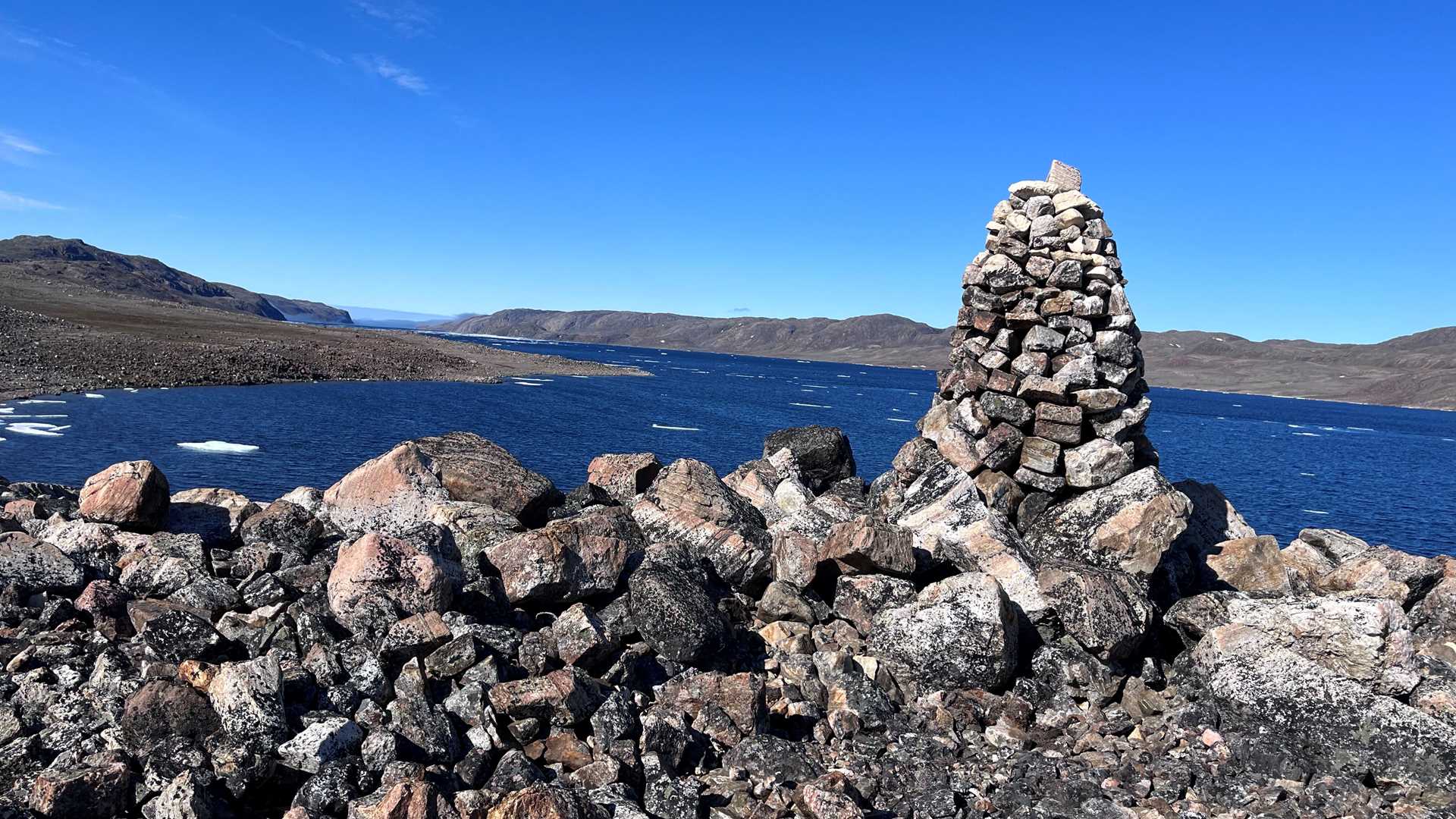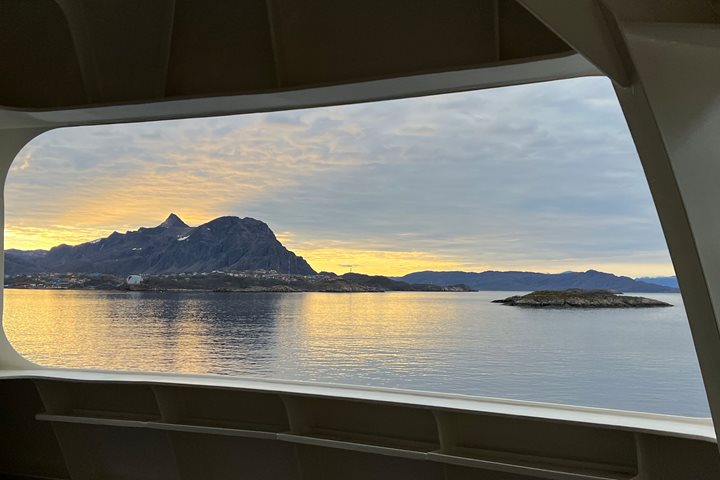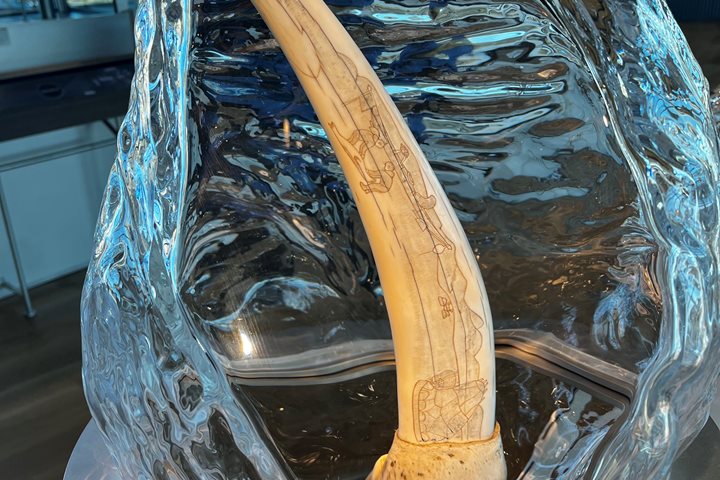Another exceptional day on board National Geographic Endurance. Several more bowhead whales graced early risers with their presence on the surface waters of Regent Inlet before the tide was in our favour to pass through Bellot Strait. Heading towards the entrance, it was hard to believe there was any way through. Indeed, it was clear why so many before us had not found this passage.
A clever steer to the right, then a sharp left, and the strait became clear. As we navigated westwards, first narwhals and then beluga whales skimmed the surface as we passed. Some guests strived to get ‘the’ shot whilst others had more success just enjoying the moment through binoculars. About halfway through the strait, we stopped at Zenith Point to step foot on the most northern point of continental North America. Again, we were reminded just how few people have laid eyes or foot on this ground.
The fog on the far side of the strait mirrored the emotions on board. Visibility and ice conditions on the far side would determine whether we could continue or make the tough decision to turn back. Dense ice could prevent us from making it to our destination, as sometimes happens. As the sunlight broke through the fog, we could see the white reflection of the pack ice ahead of us. It was impossible to tell if there was a channel or what the state of the ice was. As we approached closer, the path of our sister ship, two days ahead of us, started to become apparent as leads and then broken ice at the surface.
By now, we are all accustomed to the shaking, shuddering, and various noises associated with the agile movement of National Geographic Endurance as she moves through ice. The afternoon hours were spent with keen eyes looking for fleeting glances of narwhals along the ice at the edge of our pathway. It is great to be making progress through the ice, and we are well on our way through the trickiest portions of the Northwest Passage.







